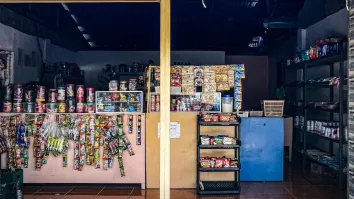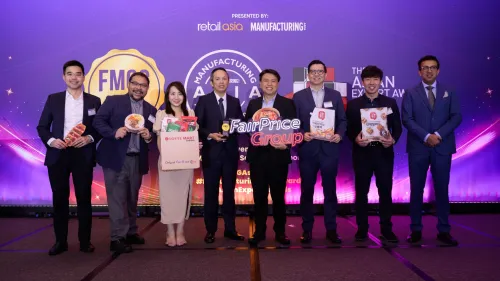What to Expect in the Retail Revival?
By Daren NgAs Singapore tentatively eases COVID-19 restrictions, the Lunar New Year tunes and décor may signal a returning to life for in-store retail. This should be exciting news for many brick-and-mortar retailers and consumers who have been deprived of in-store shopping experience. In a recent Sensormatic Solutions study, almost one third (30%) of Singapore consumers said they missed shopping in physical stores.
We have all seen how the world shifted to and pretty much relied on e-commerce when the pandemic hit, and authorities had to implement mobility restrictions and safe management measures. The same study revealed that only half of the consumers in Singapore shop in stores once a week. In contrast, two out of three consumers did so in pre-pandemic days.
Offline, online retail and the trend towards omnichannel
Many traditional brick-and-mortar retail operators started to incorporate e-commerce alternatives to create a hybrid customer experience when the Singapore Government implemented mobility restrictions and safe management measures during the pandemic. For instance, many retailers adopted new omnichannel concepts, like Click & Collect where shoppers can shop online and collect the items they ordered from a physical store at a location convenient to them.
Enterprise Singapore also introduced an e-Commerce Booster Package to local retailers which melds their online presence with their physical inventory as they diversify their operations. This year, the Singapore Retailers Association also partnered with Lazada to take an omnichannel approach to the Great Singapore Sale.
While e-commerce brings consumers unmatched convenience, it also presents retailers with its own set of challenges. For example, online consumers are often unhappy about the disappointment of ‘expectation vs. reality’ when they have to make purchase decisions based on looking at images or videos of products.
Online stores are also more transactional in nature compared to physical stores. In physical stores, retailers can offer personalised services to individual customers or build long-lasting customer loyalty by engaging them through in-store events and promotions.
These days, forward thinking retailers are engaging with their customers across multi-channels. They are offering a seamless omnichannel customer experience regardless of whether the customer is shopping online or in store. In fact, consumers may be browsing online even when they are physically in store.
As such, aside from brick-and-mortar stores going online, we also see retail digital natives setting up physical stores to tap on this hybrid approach to engaging with customers. Homegrown online fashion brand Love, Bonito, which started out as a blog shop, now has physical showrooms where shoppers can not only try on outfits but also attend members-only events.
Data, insights and the strength of unified commerce
According to the same study, 54% of Singapore consumers expect the shopping experience to be vastly different post pandemic, and most (55%) believe that retailers can leverage technology to offer a better in-store experience. These consumers are right because retailers are already adopting technology like data and analytics to improve shopper experiences and strengthen retail outcomes in physical stores.
In recent years, retailers are also turning to unified commerce, the approach whereby they are connecting backend systems and customer-facing channels and converging the information on a single intelligent platform. This allows them to support customers’ omnichannel journeys and create a unified view of shopper interactions, inventory and products, as well as management and operational systems.
Furthermore, retailers are creatively looking to technology to offer customers experiential experiences--or ‘retailtainment’--a mix of combining entertainment and retail. For example, the retail spaces of Korean eyewear brand Gentle Monster are designed as art installations that exhibit products like museum pieces, creating an avant-garde and immersive shopping experience. Very often, the goal for these shops may not even be to move products but rather to provide customers with a uniquely engaging experience to strengthen brand image.
Use of technology for safe management in retail
The pandemic has not only made it necessary for retailers to have a tightly integrated digital and non-digital strategy, but it has also changed how technology is used to create a safe in-store environment.
Many Singapore consumers cite the ability to check real-time physical stock online as well as the lack of overcrowding as key factors for in-store patronage. Sensormatic’s study showed that health and safety concerns continue to be a top priority for in-store shoppers, with 41 percent believing that efficient management of in-store traffic to prevent overcrowding will contribute to a better shopping experience.
Retailers can gain essential visibility into shopper density and footfall across their stores using data and analytics. They can even use data to track and project the number of visitors for their stores to efficiently plan staff deployment. This allows retailers to effectively enforce safe distancing, manage store capacity, and ensure sanitation for high-touch areas such as self-checkout kiosks and common facilities such as restrooms.
Intelligent inventory management that gives an overview of inventory at the item level can also provide consumers with real-time stock updates so that they can plan their in-store visits and avoid making unnecessary trips. This kind of technology also enables the smooth execution of omnichannel concepts like Click & Collect that require real-time understanding of in-store and warehouse inventory.
We may finally be seeing the light at the end of the Singapore retail tunnel as we gain better control of the pandemic. With strategic use of technology, retailers can take advantage of the new endemic approach to ensure the gongs and cash registers continue to ring.




















 Advertise
Advertise





